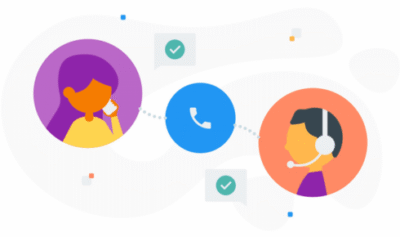
HubSpot integration with Salesforce
Every business owner knows the look. You ask for a quick customer update and your team suddenly opens five tabs, three spreadsheets, and one “I’ll get back to you.” Somewhere between your CRM, accounting software, and marketing tools, your customer data went on a gap year.
This isn’t inefficiency. It’s fragmentation, a silent killer of productivity, insights, and customer experience.
In today’s fast-paced New Zealand business landscape, customers expect personal, real-time service. But when your data is scattered across tools that don’t talk to each other, delivering that experience becomes a guessing game. The solution? Turning those disconnected systems into a unified customer view, so you can see, understand, and serve every customer as one.
Let’s unpack how integrations like HubSpot integration with Salesforce can help you connect the dots and create a single, living picture of your customers.
Why Fragmented Systems Hold Businesses Back
Before we fix it, let’s admit it, most of us built our systems reactively. You add a new tool to fix a problem, then another to fill a gap, and before you know it, your “tech stack” looks more like a patchwork quilt.
Here’s what happens when systems don’t play nicely:
- Sales and marketing misalignment: Sales doesn’t see campaign data, and marketing doesn’t know what happens after leads convert.
- Duplicate data entries: The same customer lives three different lives across platforms.
- Reporting chaos: You spend more time reconciling spreadsheets than analysing insights.
- Customer frustration: When your data’s disjointed, your communication is too.
The result? Missed opportunities and a slower path to growth.
The Power of a Unified Customer View
A unified customer view brings everything, sales, marketing, service, and support, into one shared space. It’s like finally putting all your puzzle pieces on one table.
When everyone’s looking at the same data, every team becomes customer-first.
HubSpot Integration with Salesforce: The Bridge Between Two Giants
If you already use Salesforce as your CRM and HubSpot for marketing automation, you’ve probably felt the friction. Salesforce holds the deals, HubSpot drives the leads, but what happens in between can feel like a black hole.
That’s where HubSpot integration with Salesforce changes the game.
It acts as a bridge, syncing contacts, activities, and deal information in real time. Every lead, email, meeting, and pipeline movement becomes visible to both systems, no double handling, no missing data.
How it works:
- Data Sync: Automatically share contacts, companies, and deals between HubSpot and Salesforce.
- Custom Mapping: Choose which fields you want to sync, so only relevant data moves across.
- Activity Tracking: Emails, meetings, and calls sync instantly, keeping both platforms updated.
- Lead Intelligence: Use HubSpot’s behavioural data to help Salesforce users prioritise high-quality leads.
This integration doesn’t just make life easier, it unlocks new layers of strategy. Imagine marketing knowing exactly when sales closed a deal, or sales seeing every campaign touchpoint that led to it.
How a Unified Customer View Transforms Your Business
1. Stronger Collaboration Across Teams
When everyone shares the same customer data, there’s less guessing and more doing. Sales, marketing, and service teams can coordinate efforts with clarity, improving response times and customer experience.
2. Smarter Decisions with Real Data
Fragmented data hides patterns. Unified data reveals them. With HubSpot and Salesforce connected, you can spot trends, forecast accurately, and base decisions on evidence, not gut feeling.
3. Personalised Customer Experiences
A unified view lets you understand customers deeply. You’ll know what they’ve seen, what they’ve clicked, and what they’ve bought, so your messaging feels more relevant and less robotic.
4. Reduced Operational Waste
Fewer manual exports. Less double data entry. More time for strategy. With automated syncs between systems, your team can focus on high-value work instead of admin chaos.
FAQs: What Businesses in New Zealand Often Ask
1. Is HubSpot integration with Salesforce difficult to set up?
Not at all. The integration is designed for simplicity. Most businesses can configure it within a few hours, especially with the help of experienced HubSpot partners.
2. What kind of data can I sync?
You can sync contacts, leads, companies, deals, and activities. Custom fields can also be mapped to fit your unique business setup.
3. Can I choose what data to share?
Yes. You have full control over which fields and records sync between the systems. Sensitive or irrelevant data can easily be excluded.
4. Will the integration slow down my systems?
No. It operates in the background using API syncs, ensuring performance stays smooth while data stays current.
5. What’s the benefit of working with HubSpot partners in New Zealand?
Local partners understand both the technology and the New Zealand market. They can help customise integrations, train your team, and ensure everything aligns with your business goals.
A Local Perspective: Why New Zealand Businesses Are Prioritising Integration
New Zealand’s business environment is known for agility. Many Kiwi companies run lean teams with multiple roles, meaning efficiency isn’t optional, it’s survival.
When systems aren’t connected, small inefficiencies compound fast. A single missed follow-up or outdated report can mean losing a deal in a tight market. By integrating platforms like HubSpot and Salesforce, local businesses can compete at scale, without adding headcount.
It’s not just a tech move. It’s a strategy for smarter growth.
Conclusion: From Fragmented to Future-Ready
Your business doesn’t need another platform. It needs clarity.
Turning fragmented systems into a unified customer view isn’t just about technology, it’s about vision. It’s about knowing your customer better than ever, empowering your teams, and making data work for you, not against you.
If your CRM and marketing systems feel like they’re on different islands, it’s time to build the bridge.
Partnering with experienced HubSpot partners in New Zealand can help you connect Salesforce, HubSpot, and every other tool in your ecosystem. The result? A complete, unified, and future-ready view of your customers, so you can deliver smarter service and faster growth.